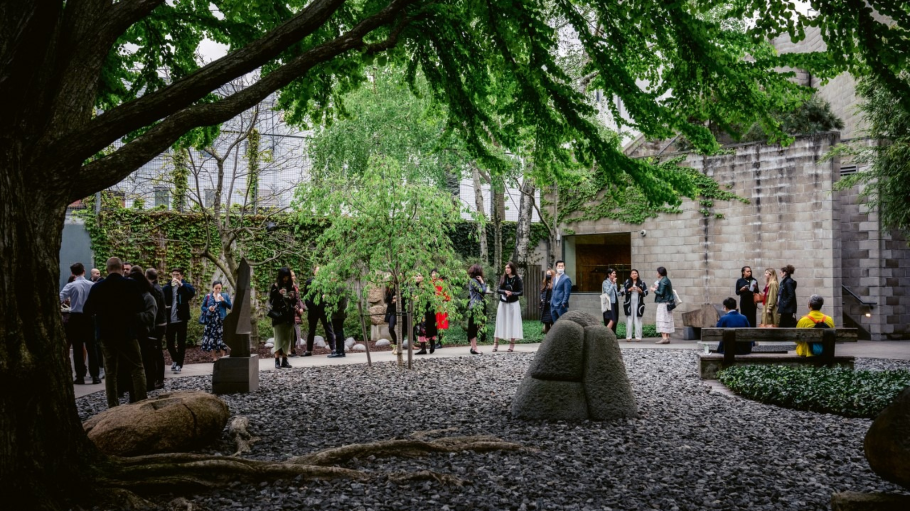Why Noguchi Still Matters to the Fashion and Design Crowd
The namesake museum in Long Island City is widening its reach by courting younger generations.

Artist and designer Isamu Noguchi’s lasting influence on different disciplines of design and creative pursuits was evident Tuesday night during the “Noguchi at Night” benefit celebration at The Noguchi Museum.
Designer Sandy Liang, Mission Chinese’s chef and owner Danny Bowien and Christine Park co-chaired the music and culinary experience, which celebrated Asian American and Pacific Islander creatives. It also raised funds for the museum and its 2022 Artist Banner project that started last year as a sign of solidarity against anti-Asian violence. The project was also created as an open call for AAPI artists to have select work showcased in the museum’s outdoor banners.
As guests mingled beneath a Katsura tree in the museum’s tranquil sculpture garden reflective of the totality of Noguchi’s original design, Hisham Akira Bharoocha offered a solo drum performance in the indoor-outdoor gallery. Attendees in the 275-person included Patrick Li, Bliss Lau, Tomoko Ogura, Minami Gessel, Miki Higasi, Frances Cha, Sugar Vendil, Eric Shiner, Nick Atkins and others. Guests enjoyed small dishes crafted by Bowien and Suntory cocktails. Before Japanese Breakfast’s Michelle Zauner performed an acoustic solo set in the museum’s main gallery, some guests circulated through the galleries and others lingered by the Akari light sculptures in the minimalist museum shop. In keeping with the event’s naturalistic setting, Yip Studio’s Amy Yip provided rock-shaped cake pops.

The Noguchi Museum in Long Island City was the first museum in the U.S. to be established by a living artist. The museum’s director Brett Littman said, “Noguchi probably represents one of the most important biracial figures in the 20th century in terms of American art. His identity is the fulcrum on which his whole artwork sits — Eastern-Western, American-Japanese. For us, I want to start tying together all of those threads and really start thinking about Noguchi’s values and being able to bring forward the AAPI creative community through performance, music, dance — whatever it is. This gala is the first step in that way.”
Just a few weeks ago, the International Woolmark Prize hailed this year’s seven finalists in a short film directed by FKA Twigs that came with an immersive showroom and a partnership with the Isamu Noguchi Foundation and Garden Museum. Looking out at the understatedly chic crowd in the garden, Littman spoke of the artist’s renewed appeal.
“Younger people are very attracted to Noguchi at the moment, and in particular in the fashion and design world,” he said. “We just did the project with the Woolmark Prize and FKA Twigs. A lot of people are looking at Noguchi as a kind of person who was thinking about nature, holistic thinking in the placing of things, ecology and identity.”
Continuing, Littman said, “He’s also a great polymath. He was doing seamlessly industrial design, architecture, garden design. He was someone who moves so quickly through things and without really a pause. Of course, everything for him was sculpture so he had the rubric under which he could work and organize everything….Also, [he had] this sense of minimalism or essentialism. What you see here looks very minimalist and placed. He was more about the materiality. Of course, he tends toward fewer things. Noguchis look really good, when there is just one thing in a space. Overall, I would just say that he is an artist, who seems to be of the time — again, which is lovely. He’s not a Modernist fossil — at all.”
